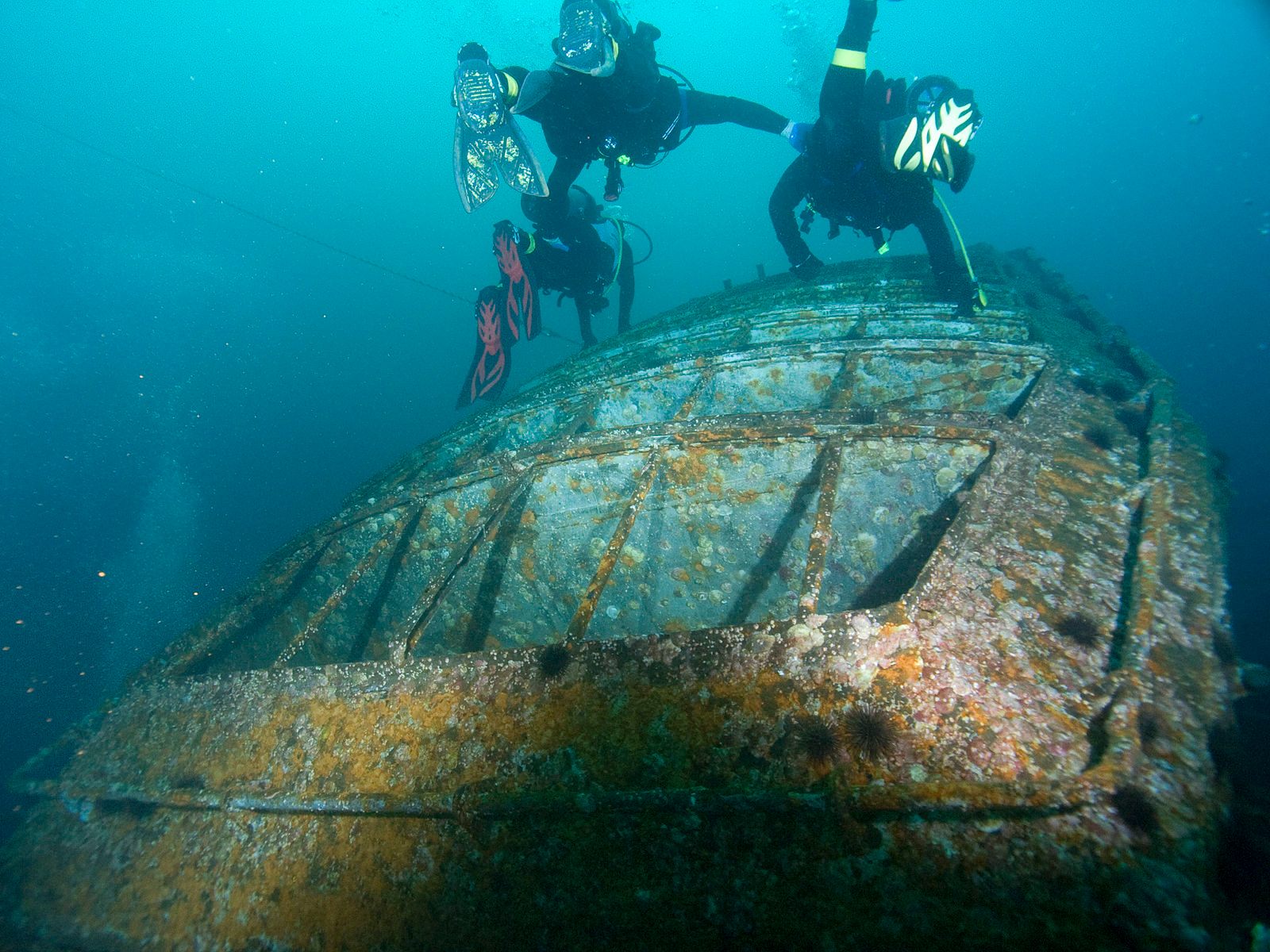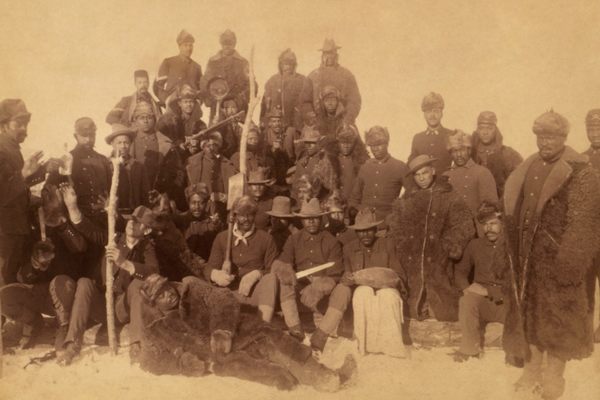Happy 11th Birthday to the ‘Great Carrier Reef’
On May 17, 2006, the USS Oriskany transformed from a warship into the world’s largest artificial reef made from recycled materials.

The USS Oriskany, a 888-foot aircraft carrier launched just after World War II, led an eventful life. It saw combat in Korea and Vietnam, and suffered a massive magnesium* fire. It made cameos in several films about the Korean War, and even hosted a ballet performance while docked in Manhattan in 1952.
It also had an eventful death. On May 17, 2006, after a few decades of retirement, Oriskany was towed 24 miles south of Pensacola. A Navy team filled it with 500 pounds of strategically-placed explosives, and detonated them in a series of bursts. Thirty-seven minutes later—much more quickly than anyone expected—the ship had sunk to the bottom of the Gulf of Mexico, where it began its afterlife as the world’s largest recycled artificial reef. (Although a larger one has since been built in the Mexican Caribbean, that one is made out of thousands of concrete pyramids that were constructed for the purpose.)

Back when it floated, the Oriskany was prized for its size and speed—it could tote whole planes across the ocean, after all. Now that it’s underwater, though, its immobility is its strong suit. When ocean currents hit the massive structure, they form stationary waves, trapping tiny plankton that would otherwise be swept along.
Small, hungry fish follow behind, as do their own predators, such as red snapper and scamp groupers, and their predators, such as tiger sharks and hammerheads. Meanwhile, crawlier creatures take refuge in its many crevasses. Just a week after it was sunk, one early diver reported, it had been almost completely colonized by tiny newborn crabs.

Artificial reefs are considered economically beneficial—a steady supply of congregating seafood means more money for fishermen, and those enthusiastic schools of scuba divers don’t hurt, either. Making reefs out of Navy ships also saves the government the cost of either scrapping retired ships or keeping them afloat.
The Oriskany will never pass for natural, though, and its environmental impact is still up in the air. Although the Navy removed most blatantly hazardous materials from the ship before sinking it, they ended up leaving in some insulation, paint, and fiberglass that contains polychlorinated biphenyl, or PCB, a harmful chemical that was banned in the U.S. in 1979. Scientists are currently on the lookout for PCB traces inside of fish.

In the meantime, for eleven years now, the Oriskany has been slowly remaking itself as a wildlife habitat. (Fans now call it the “Great Carrier Reef.”) Divers describe a ship’s tower colonized by sea urchins and barnacles, with barracuda patrolling the empty windows, and rays dipping in and out of holes eroded in the flight deck. SCUBA diehards flock to what is essentially an ideal diving scenario, a sunken ship.
Occasionally, the carrier will host a visitor from its old life, either temporarily, as a diver, or permanently—the ship’s veterans occasionally ask to have their ashes interred there.

Although the Oriskany is the largest ship to become an artificial reef, it’s only one of dozens that have been granted this type of rebirth. Former US Navy vessels are currently housing crabs, fish, sharks, and divers everywhere from Hawaii (a minesweeper, the USS Scrimmage, sunk way back in 1982) to New Jersey (the latest recruit, a tugboat called the Tamaroa, famous for rescuing near-victims of 1991’s “Perfect Storm,” and sunk earlier this month).
Together, they form a curious ecosystem—war machines that, after their death, have been called upon to support life.
*Correction: This post previously stated that the Oriskany hosted a mercury fire—it was actually a magnesium fire.















Follow us on Twitter to get the latest on the world's hidden wonders.
Like us on Facebook to get the latest on the world's hidden wonders.
Follow us on Twitter Like us on Facebook